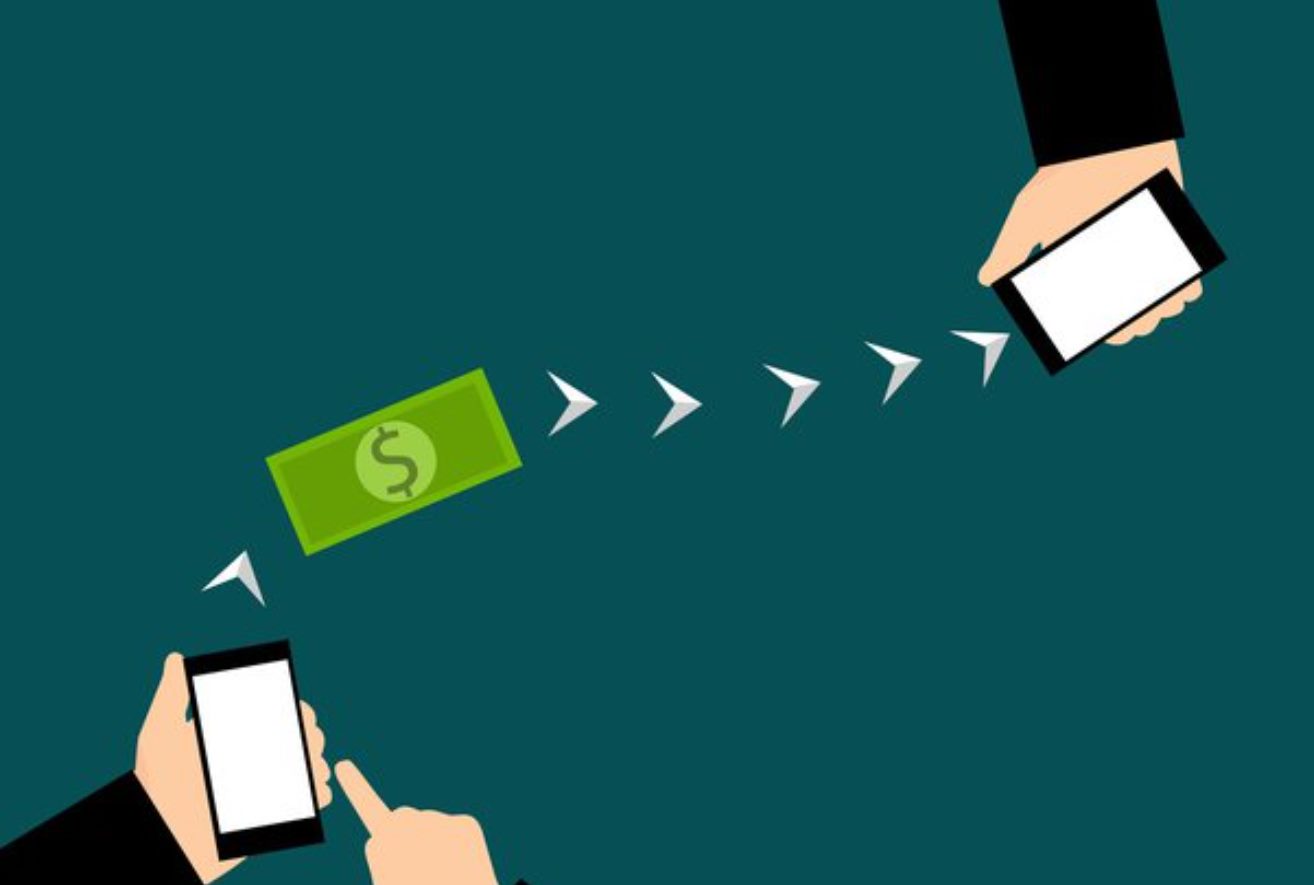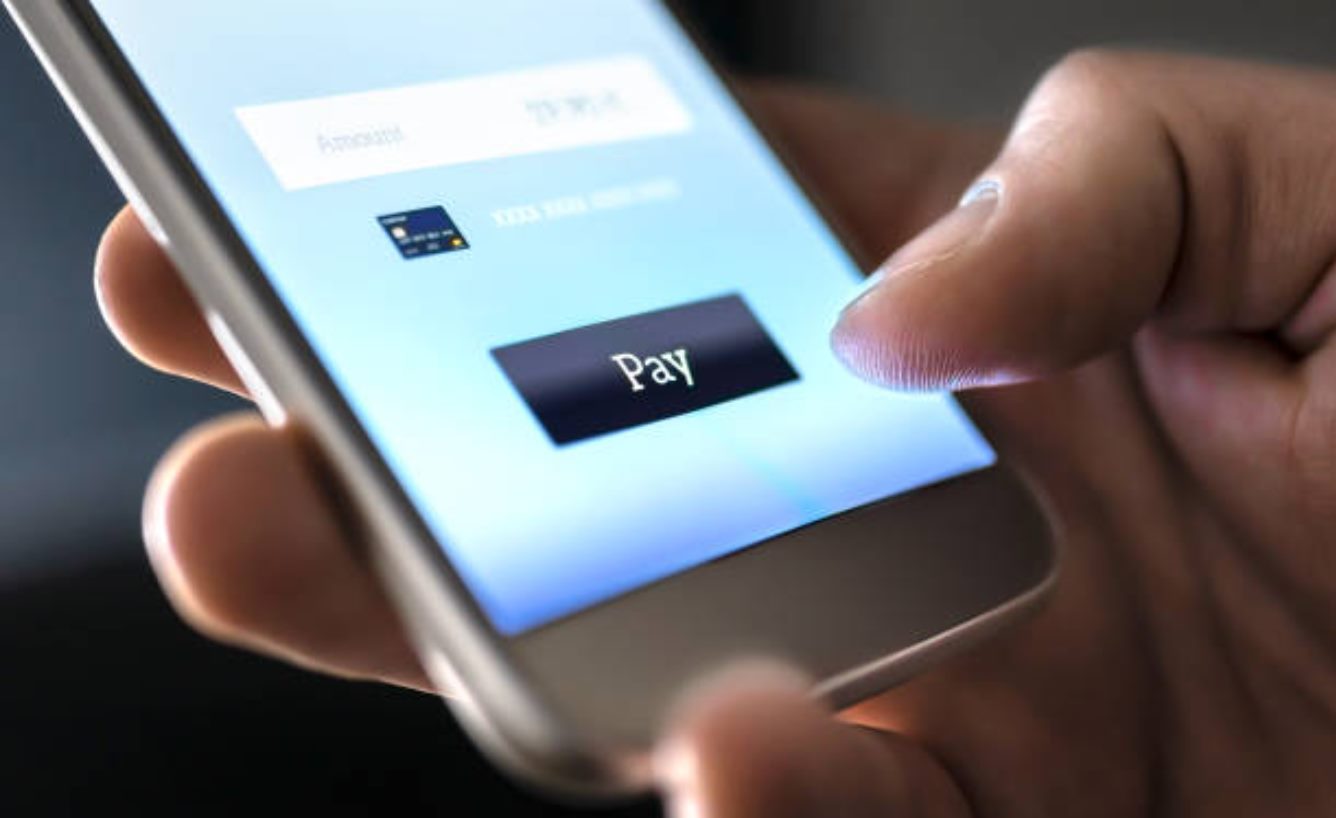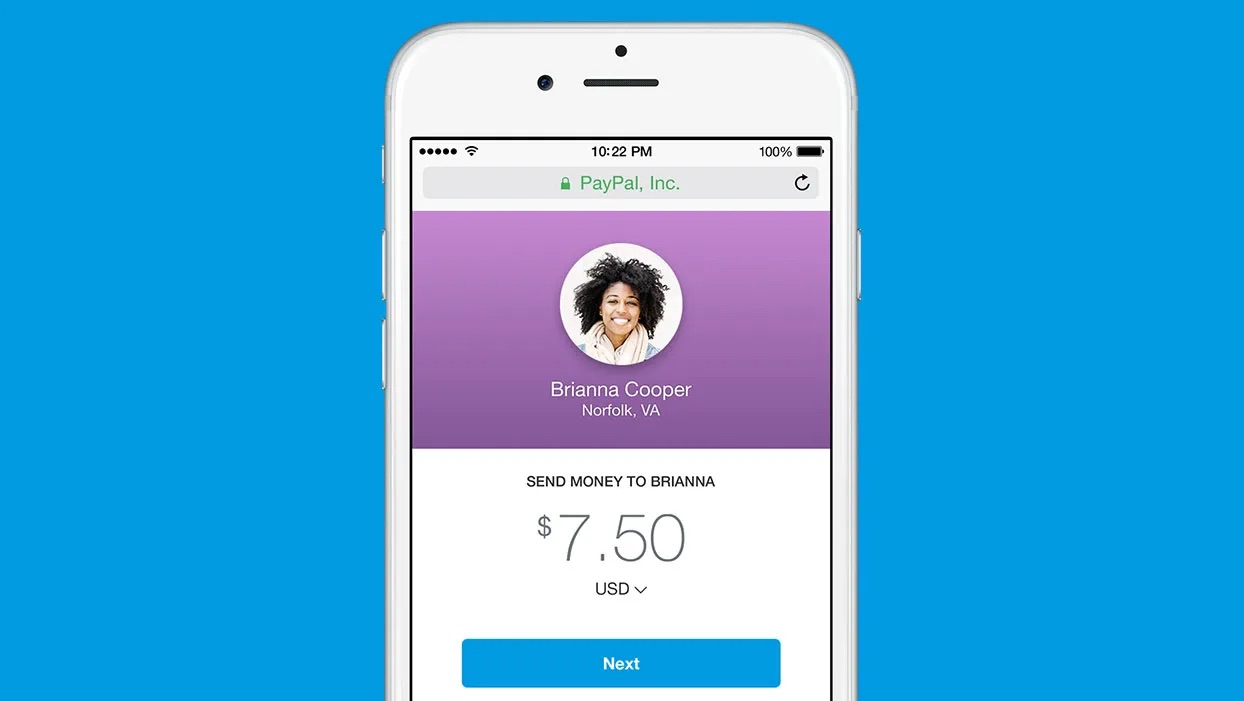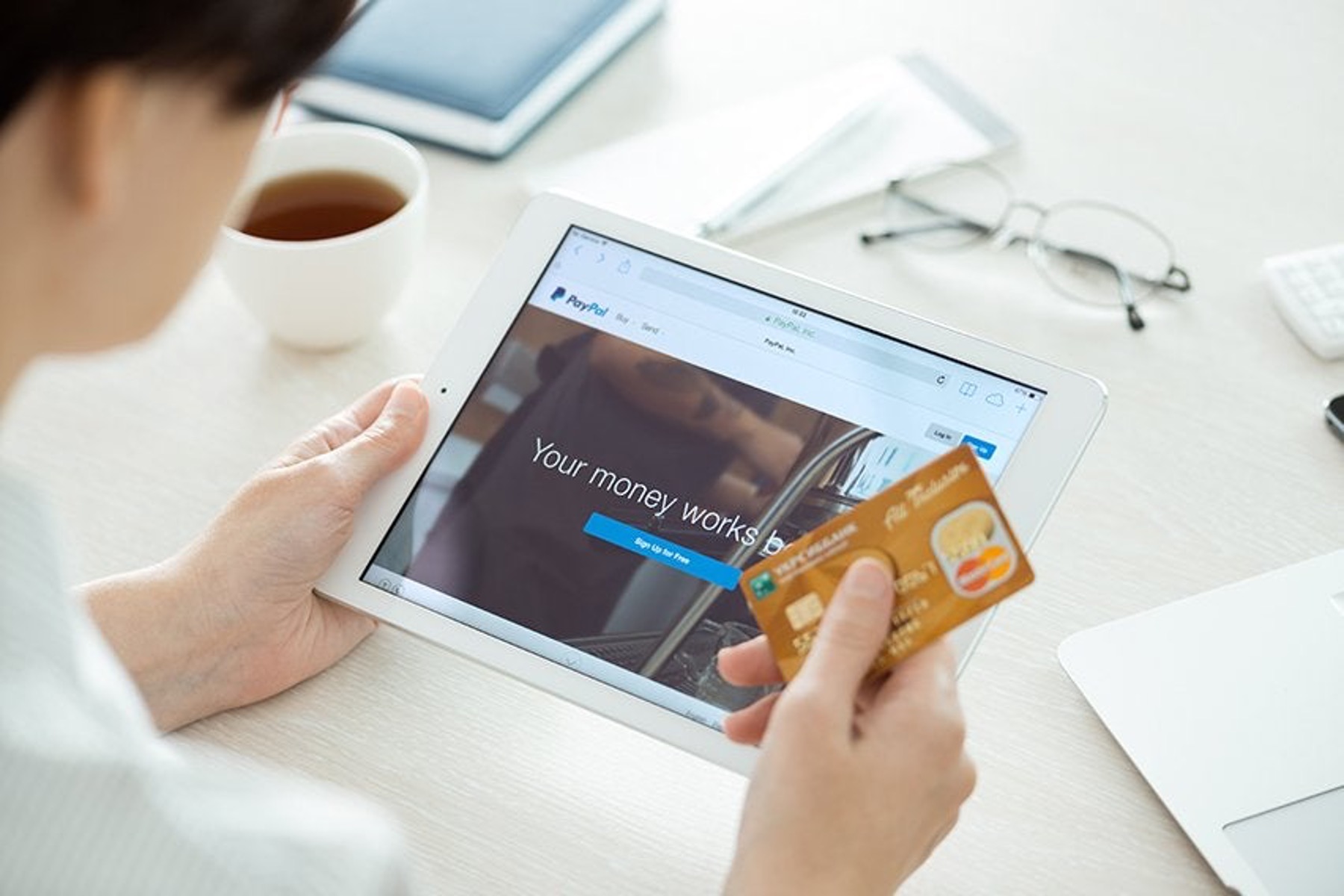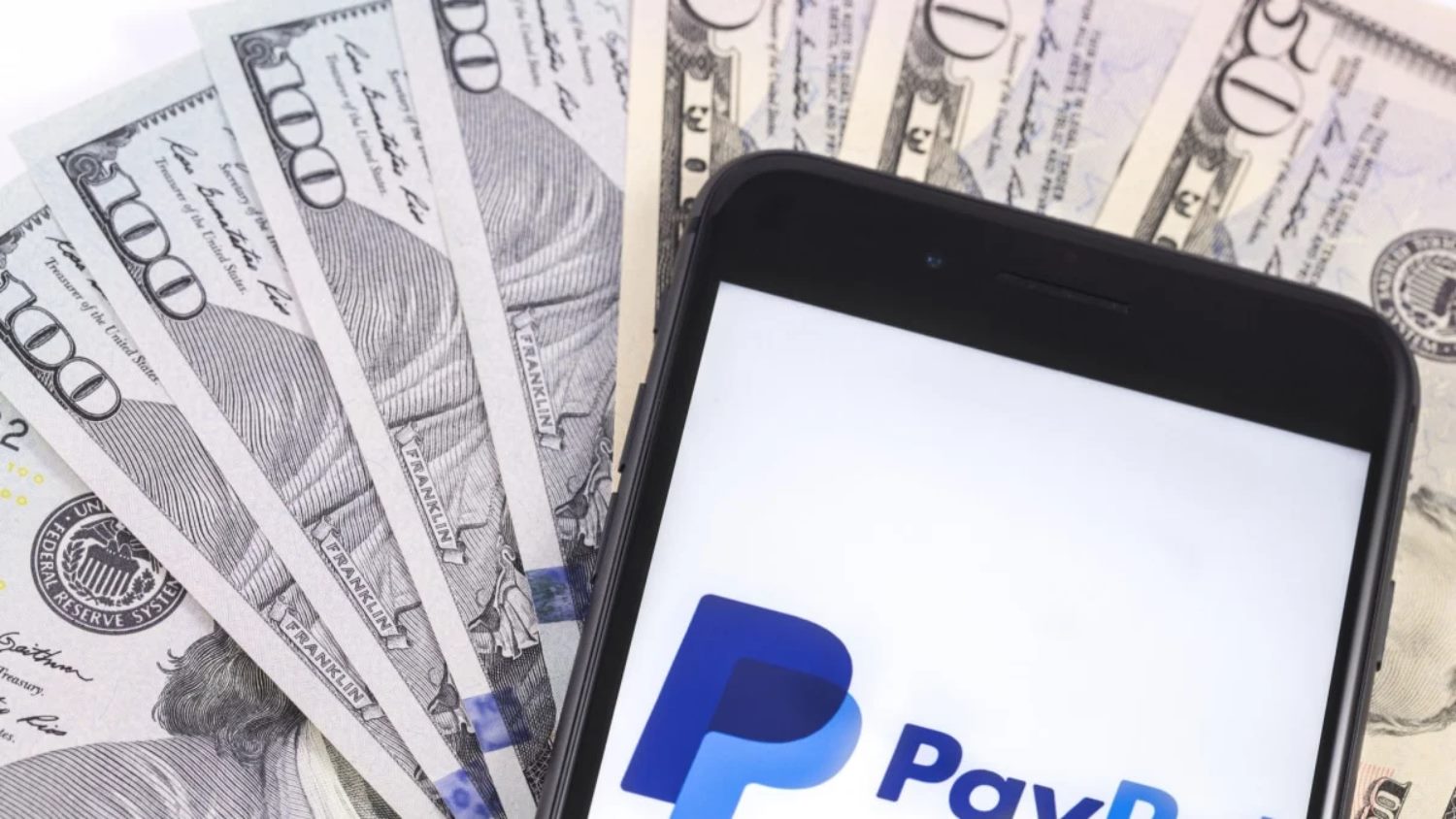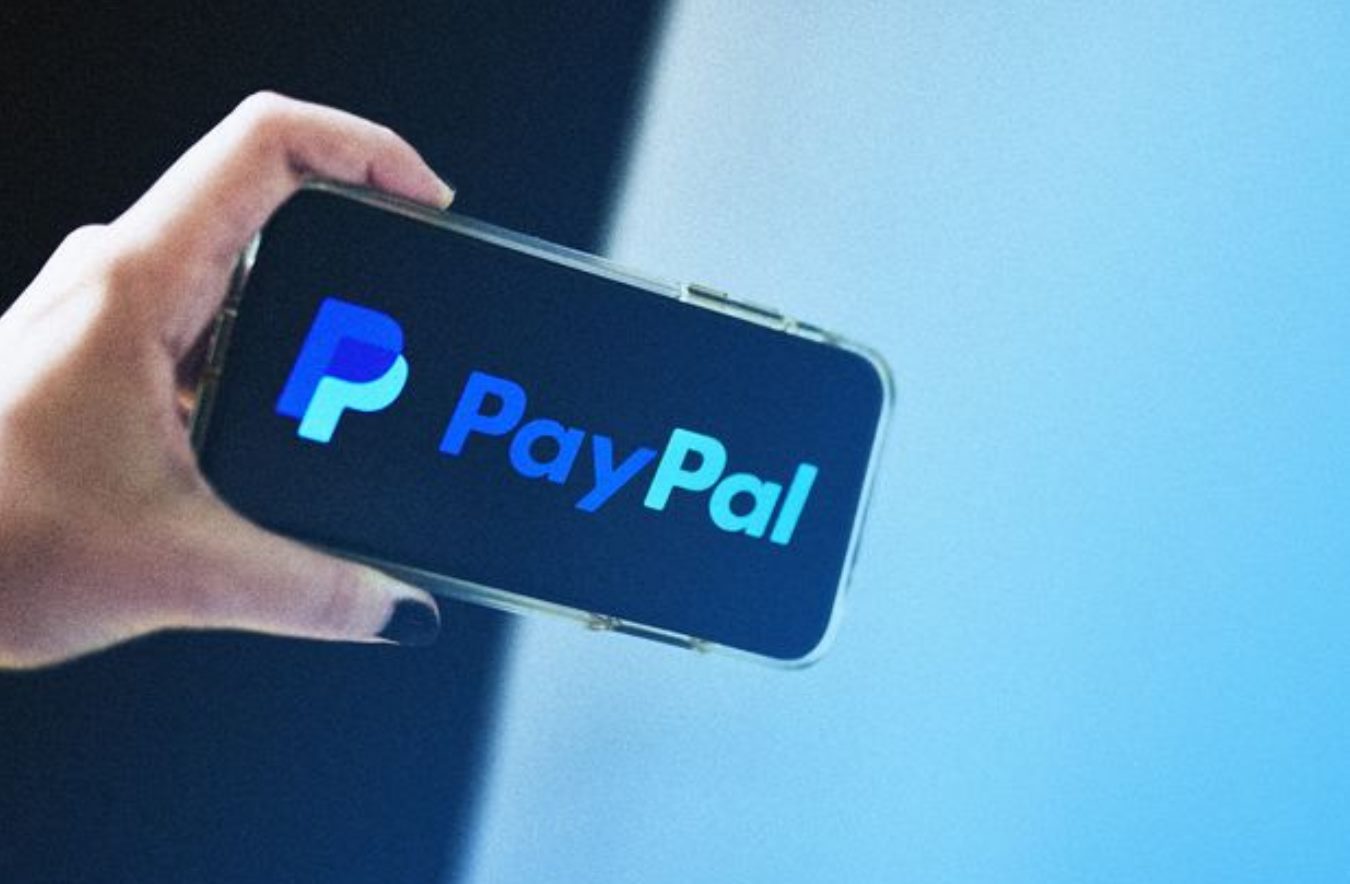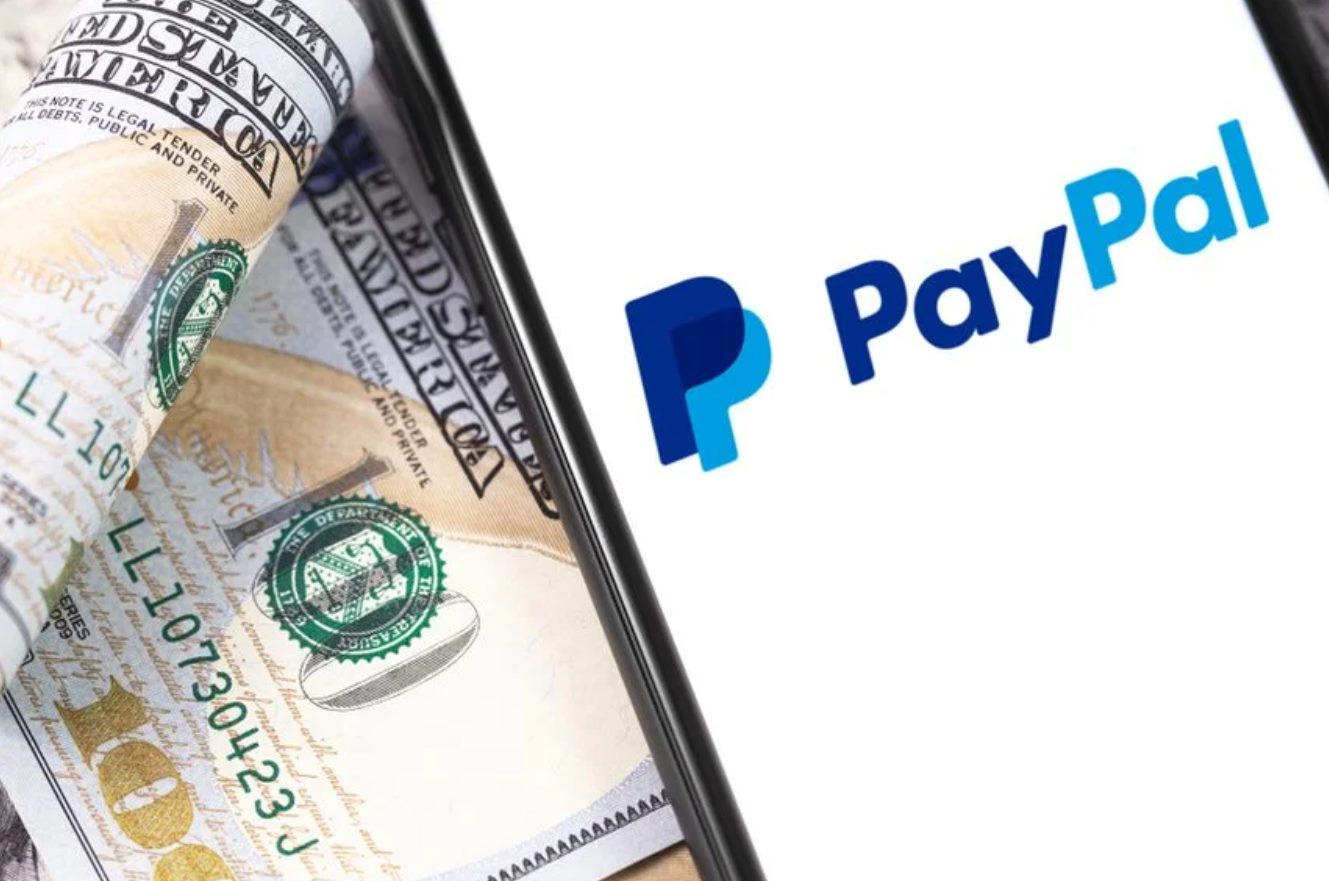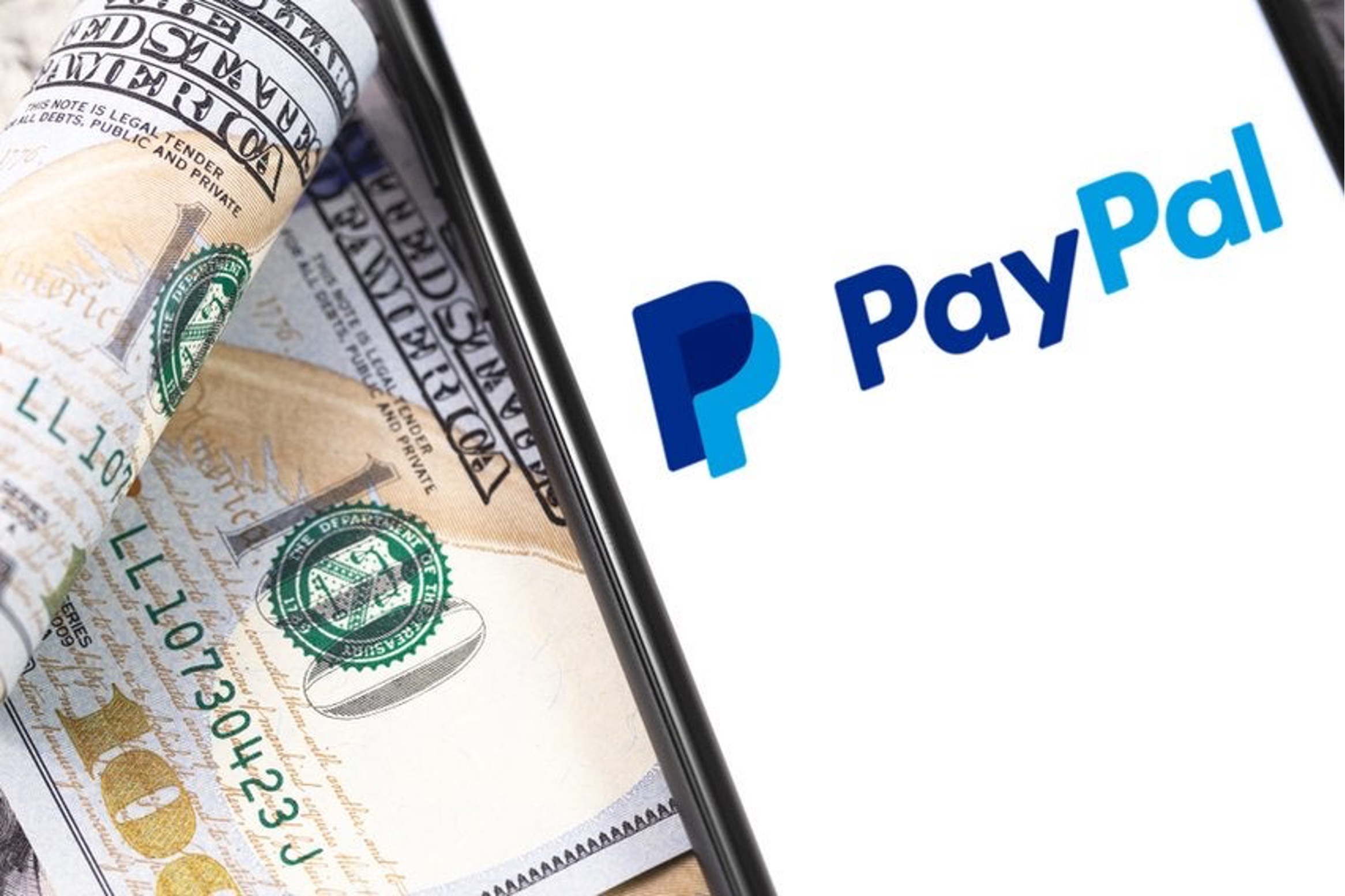Introduction
PayPal has revolutionized the way we send and receive money online. Whether you need to split a bill with friends, collect payments for your small business, or simply request money from a family member, PayPal provides a convenient and secure platform to do so.
In this comprehensive guide, we will walk you through the process of requesting money on PayPal. From setting up your account to customizing payment requests, we will cover everything you need to know to ensure a smooth and successful experience.
With over 300 million active users worldwide, PayPal has become the go-to platform for online transactions. Its user-friendly interface, robust security measures, and extensive payment options make it a preferred choice for individuals and businesses alike.
Whether you are new to PayPal or an existing user looking for tips and best practices, this article will serve as your ultimate resource. Our step-by-step instructions, helpful troubleshooting tips, and comprehensive insights will empower you to effectively request money on PayPal and streamline your financial transactions.
So, whether you want to collect funds for a fundraiser, request payment for goods or services, or simply ask a friend to pay you back, PayPal offers a seamless and efficient way to get paid.
With that said, let’s dive into the world of PayPal and learn how to easily request money from anyone, anywhere, at any time.
Setting up a PayPal account
Before you can start requesting money on PayPal, you need to have a PayPal account. Setting up an account is quick, easy, and free. Here’s how you can get started:
- Visit the PayPal website (www.paypal.com) and click on the “Sign Up” button.
- Select the type of account you want to create – Personal or Business. A Personal account is recommended for individuals, while a Business account is suitable for businesses or organizations.
- Provide the required information, including your email address, password, and personal details. Make sure to use a strong password to protect your account.
- Verify your email address by clicking on the link sent to your email inbox.
- Link your bank account or credit card to your PayPal account. This step is essential for sending and receiving money.
- Set up your security measures, such as adding a mobile phone number for two-factor authentication and enabling notifications for account activity.
Once you have completed these steps, you now have a fully functioning PayPal account. You can access your account from any device with an internet connection, making it convenient to request money whenever and wherever you need to.
It’s worth noting that PayPal takes security seriously and employs advanced encryption and fraud prevention measures to protect your financial information. Additionally, PayPal offers buyer and seller protection, giving you added peace of mind when requesting and sending money.
With your PayPal account set up, you are now ready to explore the different features and options available to request money on PayPal. In the next sections, we will walk you through the process of navigating the user interface, linking your bank account or credit card, understanding fees and charges, and more.
Navigating the PayPal user interface
Once you have set up your PayPal account, it’s important to familiarize yourself with the user interface. The navigation and layout of the PayPal website and mobile app are designed to be user-friendly and intuitive. Here are the key elements you need to know:
- Dashboard: After logging in, you will be taken to the PayPal dashboard. This is the central hub where you can access all the features and functions of your account. It provides an overview of your recent transactions, account balance, and important notifications.
- Send & Request: This section allows you to send money to others or request money from them. To request money, simply click on the “Request Money” option and follow the prompts.
- Activity: The activity section displays a detailed history of all your PayPal transactions, including payments received, sent, and pending. You can search and filter transactions based on various criteria, making it easy to track and manage your finances.
- Wallet: The wallet section is where you can manage your linked bank accounts, credit cards, and PayPal balance. You can add or remove payment methods, set a preferred funding source, and update your personal information.
- Settings: The settings tab allows you to customize your account preferences, security settings, and notification preferences. You can also manage your linked devices and update your profile information here.
In addition to these main sections, PayPal also provides quick access links for requesting money, sending invoices, and managing subscriptions. The user interface is responsive and adjusts seamlessly to different screen sizes, making it accessible on desktops, laptops, tablets, and mobile devices.
To navigate through the PayPal user interface, simply click on the desired section or tab, and follow the on-screen instructions. The user interface is designed to be self-explanatory, but if you need any assistance, PayPal provides comprehensive help documentation and customer support for any queries or issues you may encounter.
Now that you are familiar with navigating the PayPal user interface, let’s move on to the next section, which covers how to link a bank account or credit card to your PayPal account.
How to link a bank account or credit card
In order to send and receive money on PayPal, you need to link a bank account or credit card to your PayPal account. This allows you to fund your transactions and withdraw money from your PayPal balance. Here’s how you can link your bank account or credit card:
- Log in to your PayPal account and navigate to the Wallet section.
- Click on the “Link a bank account” or “Link a card” option.
- Follow the prompts to enter the required details, such as your bank account number or credit card information.
- Verify your linked account by confirming small deposits or authorizations made by PayPal.
- Once your account is successfully linked, you can choose it as a funding source whenever you are making a payment or requesting money.
It’s important to note that linking a bank account or credit card to your PayPal account is secure and encrypted. PayPal does not store or share your financial information with the recipients of your payments. When you make a payment or request money, PayPal acts as the intermediary, ensuring that your transactions are safe and protected.
Additionally, linking a bank account or credit card provides you with more payment options and flexibility. You can choose to pay directly from your PayPal balance, use your linked bank account for e-check payments, or use a credit card for instant transactions.
If you ever need to update or remove a linked bank account or credit card, you can easily do so in the Wallet section of your PayPal account. Remember to keep your account information up to date to ensure smooth financial transactions.
Now that you have successfully linked your bank account or credit card to your PayPal account, you are ready to explore the various methods of requesting money on PayPal. In the next section, we will discuss the different methods available to request funds.
Understanding PayPal fees and charges
When using PayPal to request money, it’s important to understand the fees and charges associated with the platform. While setting up a PayPal account is free, there are certain fees that may apply depending on the type of transaction and the country you are located in. Here’s a breakdown of the main fees and charges to be aware of:
- Transaction fees: PayPal charges a fee for receiving payments. The fee varies based on factors such as the type of transaction (personal or business), the country of the sender, the currency used, and the total transaction amount. These fees are deducted from the amount you receive, so it’s important to consider them when requesting money.
- International fees: If you are receiving payments from another country or in a different currency, additional fees may apply. PayPal charges a currency conversion fee for converting funds to your primary currency, as well as an international transaction fee for cross-border transactions.
- Withdrawal fees: If you need to transfer funds from your PayPal account to your linked bank account, there may be withdrawal fees involved. These fees depend on factors such as the country you are withdrawing to and the amount being transferred. It’s important to check the specific fees for your country to understand the cost of withdrawing your funds.
- Additional fees: PayPal offers additional services such as PayPal Here for in-person payments and PayPal Checkout for online merchants. These services may have separate fees and charges associated with them, so it’s important to review the documentation or contact PayPal directly for more information.
To view the specific fees applicable to your account, you can refer to the Fees section on the PayPal website or access the fees calculator. It’s also a good idea to regularly review the fees and charges, as they may be subject to change, and familiarize yourself with PayPal’s policies to ensure you are aware of any potential costs involved.
By understanding the fees and charges associated with PayPal, you can accurately calculate the amount you need to request from others and plan your financial transactions accordingly. It’s also important to communicate these fees transparently with others when requesting money to avoid any misunderstandings.
Now that you have a clear understanding of the fees and charges, let’s explore the different methods available to request money on PayPal in the next section.
Different methods to request money on PayPal
PayPal offers various methods to request money from others, catering to different needs and situations. Here are the different methods you can use to request funds on PayPal:
- Request Money: The most straightforward method is to use the “Request Money” feature on PayPal. Simply enter the recipient’s email address or mobile number, specify the amount, and add any additional details or notes. PayPal will then send a notification to the recipient, allowing them to easily make the payment.
- Send Invoice: For businesses or individuals providing goods or services, sending an invoice is a professional way to request payment. PayPal offers an invoicing feature that allows you to create and send customized invoices directly to your clients or customers. They can then pay the invoice online using their PayPal account or credit card.
- QR Code: PayPal also offers a QR code feature, which is particularly useful for in-person transactions or events. You can generate a unique QR code for the specified amount and share it with the person you want to request money from. They can simply scan the code using the PayPal mobile app and complete the payment instantly.
- Payment Request Link: A payment request link is a URL that you can share with others to request money. You can generate a payment request link from your PayPal account and send it via email, messaging apps, social media, or any other communication platform. When the person clicks on the link, they will be directed to a secure PayPal page where they can make the payment.
- PayPal.me: PayPal.me is a unique feature that allows you to create a personalized link for requesting money. You can set up a PayPal.me link with your name or business name, making it easy for others to send you money. You can share your PayPal.me link via email, social media, or any other medium to receive payments seamlessly.
Each method offers its own advantages and can be customized to suit your specific needs. Whether you need to request money from a friend, invoice a client, or collect payments at an event, PayPal provides flexible and convenient options to accommodate various scenarios.
Now that you are aware of the different methods available, let’s delve into a step-by-step guide on how to request money through PayPal in the next section.
Step-by-step guide to requesting money through PayPal
Requesting money through PayPal is a simple and straightforward process. Here’s a step-by-step guide to help you navigate the process:
- Log in to your PayPal account and click on the “Send & Request” tab.
- Select the “Request” option.
- Enter the email address, mobile number, or name of the person you want to request money from.
- Specify the amount you are requesting and choose the currency if necessary.
- Add a note or message if you want to provide additional context or details.
- Choose whether you want the payment to be marked as urgent or not. Urgent payments typically notify the recipient to take immediate action.
- Review the request details to ensure accuracy.
- Click on the “Request” button to send the payment request.
Upon sending the payment request, PayPal will notify the recipient through email or a mobile notification, depending on their preferred communication method. The recipient will then be able to view the request, review the details, and complete the payment using their PayPal account or credit card.
Once the payment is made, you will receive a notification and the funds will be added to your PayPal account balance. You can then choose to keep the funds in your PayPal account for future purchases, transfer them to your linked bank account, or use them to make other payments or transactions.
It’s important to note that requesting money on PayPal does not guarantee immediate payment. The recipient has the option to review the request and choose when to make the payment. However, PayPal provides features such as reminders and additional communication tools to facilitate prompt payment and ensure a seamless transaction process.
Now that you know the step-by-step process of requesting money through PayPal, let’s move on to the next section, which covers how you can customize and personalize your payment requests.
Customizing and personalizing your payment request
PayPal offers various customization options to make your payment requests more personalized and engaging. By adding a personal touch to your requests, you can enhance the chances of prompt payment and create a positive experience for both you and the recipient. Here are some ways you can customize and personalize your payment requests on PayPal:
- Adding a note: When sending a payment request, you have the option to include a note or message to provide additional context or instructions. This can be helpful in explaining the purpose of the payment, specifying any due dates, or simply expressing gratitude.
- Choosing payment terms: Depending on the nature of the transaction, you can specify payment terms such as the due date or any late payment fees. This helps in setting clear expectations and ensuring timely payment.
- Attaching files or invoices: If you are requesting payment for goods or services, you can attach relevant files or invoices to your payment request. This provides the recipient with the necessary documents and makes it easier for them to process the payment.
- Using professional branding: For businesses or freelancers, it’s important to maintain a professional image. PayPal allows you to add your logo, customize the payment page, and use your business name or branding to create a professional and cohesive experience for your clients.
- Sending reminder messages: In case the payment is not made within the specified timeframe, PayPal allows you to send gentle reminder messages to the recipient. This helps in keeping track of pending payments and ensuring that the request doesn’t go unnoticed or forgotten.
By taking advantage of these customization features, you can personalize your payment requests and make them more engaging and professional. This not only helps in getting your requests noticed but also creates a positive impression and fosters stronger relationships with your clients, customers, or friends.
It’s important to strike a balance between customization and simplicity. While adding personalization can be beneficial, it’s also important not to overwhelm the recipient with unnecessary details or complex requests. Keep your payment requests clear, concise, and easy to understand, ensuring a seamless and hassle-free payment process.
Now that you know how to customize and personalize your payment requests, let’s move on to the next section, where we will discuss how to confirm and track your payment requests on PayPal.
Confirming and tracking payment requests
Once you have sent a payment request on PayPal, it’s important to confirm and track its status to ensure a smooth transaction. PayPal provides several tools and features to help you keep track of your payment requests. Here’s how you can confirm and track your payment requests:
- Notification alerts: PayPal will notify you via email or mobile notifications when a payment request has been received, viewed, or paid by the recipient. These notifications help you stay informed about the status of your payment requests.
- Activity history: You can access the Activity section of your PayPal account to view the history of your payment requests. Here, you can see detailed information about each request, including the status, date and time of the request, and whether the payment has been completed or is pending.
- Request details: By clicking on a specific payment request in your Activity history, you can access detailed information about the request. This includes the recipient’s name and email address, the requested amount, any notes or messages attached to the request, and the payment status.
- Payment reminders: If a payment request remains unpaid beyond the specified timeframe, PayPal allows you to send reminder messages to the recipient. These reminders help in keeping the payment request on the recipient’s radar and encourage prompt payment.
- Payment tracking number: For certain types of requests, such as invoiced payments or transactions with tracking information, PayPal provides a unique tracking number. This number can be used to track the progress of the payment and ensure its successful delivery.
By utilizing these tools and features, you can easily confirm and track the status of your payment requests. This allows you to stay informed, follow up on pending payments, and manage your finances effectively.
If there are any discrepancies or issues with a payment request, PayPal provides a resolution center where you can initiate a dispute or seek assistance from PayPal’s customer support team. It’s important to address any concerns promptly to ensure a timely resolution.
Now that you know how to confirm and track payment requests on PayPal, let’s move on to the next section, which covers troubleshooting common issues in requesting money on PayPal.
Troubleshooting common issues in requesting money on PayPal
While PayPal strives to provide a seamless user experience, there may be times when you encounter issues or face challenges when requesting money. Here are some common issues and troubleshooting steps to resolve them:
- Invalid email or mobile number: Ensure that the email address or mobile number you have entered for the recipient is correct and active. Double-check for any typos or misspellings to avoid any discrepancies.
- Pending payment requests: If a payment request is stuck in a pending status, it could be due to various reasons such as network issues, recipient’s account limitations, or delays in payment processing. In such cases, you can send a gentle reminder to the recipient or contact PayPal’s customer support for assistance.
- Blocked or restricted payments: PayPal has certain restrictions and policies in place to prevent fraudulent activities or protect user accounts. If a payment request is blocked or restricted, it could be due to these security measures. Review PayPal’s documentation and guidelines to understand the specific restrictions and requirements, and take necessary steps to resolve the issue.
- Recipient not receiving notifications: In some cases, the recipient may not receive the payment request notifications. This could be due to email filtering, mobile notification settings, or incorrect contact information. Verify with the recipient if they have received the request and consider using alternative communication methods to ensure prompt payment.
- Technical errors or glitches: Like any online platform, PayPal may experience technical issues from time to time. If you encounter any error messages or problems during the payment request process, try clearing your browser cache, using a different browser or device, or waiting for some time before trying again.
If you are unable to resolve the issue on your own, PayPal offers comprehensive customer support services. You can reach out to their support team through various channels such as phone, email, or live chat to receive personalized assistance.
It’s important to address any issues or errors promptly to minimize any disruption in your payment requests and ensure a smooth transaction process.
Now that you are equipped with troubleshooting tips, let’s move on to the next section, which provides tips and best practices for requesting money on PayPal.
Tips and best practices for requesting money on PayPal
Requesting money on PayPal can be a seamless and efficient process if done right. Here are some tips and best practices to enhance your experience and ensure successful payment requests:
- Provide clear and concise information: When sending a payment request, ensure that you provide all necessary details such as the payment amount, due date (if applicable), and any relevant notes or instructions. Clear communication helps in avoiding confusion and facilitating prompt payment.
- Set realistic due dates: If you need the payment by a specific date, make sure to set a realistic due date that allows the recipient ample time to process the payment. Consider any potential delays or factors that may affect the payment timeline.
- Communicate fees and charges: If there are any fees or charges associated with the payment, be transparent and communicate this information to the recipient upfront. This avoids any surprises or misunderstandings and ensures a smooth transaction.
- Use professional branding: For businesses or freelancers, it’s recommended to customize your payment requests with professional branding. This includes adding your logo, utilizing a business email address, and providing clear and professional messaging to create a cohesive and professional image.
- Follow up when necessary: If a payment request remains unpaid beyond the due date, it’s appropriate to send a gentle reminder to the recipient. Polite and timely follow-ups can help in addressing any concerns or issues and ensure that the request doesn’t get overlooked.
- Secure your account: As with any online platform, it’s crucial to prioritize security. Use strong and unique passwords, enable two-factor authentication, and regularly review your account activity to detect any suspicious or unauthorized transactions.
- Keep track of your payment history: Maintain a record of your payment requests and transactions by regularly reviewing your PayPal activity. This helps in tracking pending payments, identifying any discrepancies, and providing a comprehensive overview of your financial transactions.
By following these tips and best practices, you can optimize your payment requests on PayPal and create a positive experience for both yourself and the recipient. Clear communication, professionalism, and attention to detail are key to facilitating successful transactions.
It’s also important to keep yourself updated with the latest features and developments on PayPal by regularly checking their website, reading documentation, and staying informed through communication channels such as newsletters or blog updates.
Now that you have gained valuable insights and best practices, let’s conclude this guide to requesting money on PayPal.
Conclusion
Requesting money on PayPal is a convenient and secure way to receive payments from individuals and businesses. With a user-friendly interface, diverse customization options, and a robust set of features, PayPal offers a seamless experience for requesting funds.
In this guide, we covered the essential aspects of requesting money on PayPal. We discussed how to set up a PayPal account, navigate the user interface, link a bank account or credit card, understand fees and charges, and explored different methods to request money.
We also provided a step-by-step guide on how to request money through PayPal, discussed customization options for personalizing payment requests, and highlighted the importance of confirming and tracking the status of your payment requests.
Furthermore, we addressed common issues that may arise when requesting money on PayPal and provided troubleshooting tips to overcome these challenges. Lastly, we shared tips and best practices to optimize your payment requests and ensure a smooth transaction process.
PayPal has transformed the way we handle financial transactions, making it easier and more convenient to request and receive money. By leveraging the features and tools offered by PayPal, you can streamline your payment requests and enhance your overall financial management.
Remember to always prioritize security, communicate clearly, and maintain professionalism when requesting money through PayPal. Regularly reviewing your payment history and staying up to date with PayPal’s policies and updates will further ensure a seamless experience.
Now that you are equipped with the knowledge and insights provided in this guide, you can confidently request money on PayPal and enjoy the convenience and versatility it offers.
So, go ahead and start leveraging the power of PayPal to effortlessly request money and manage your financial transactions.







